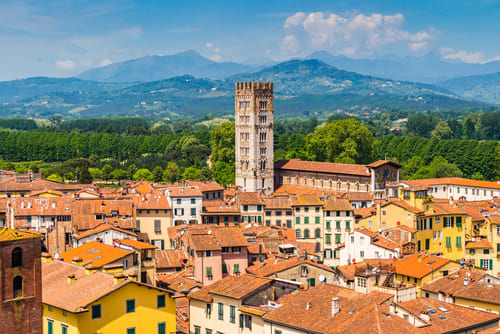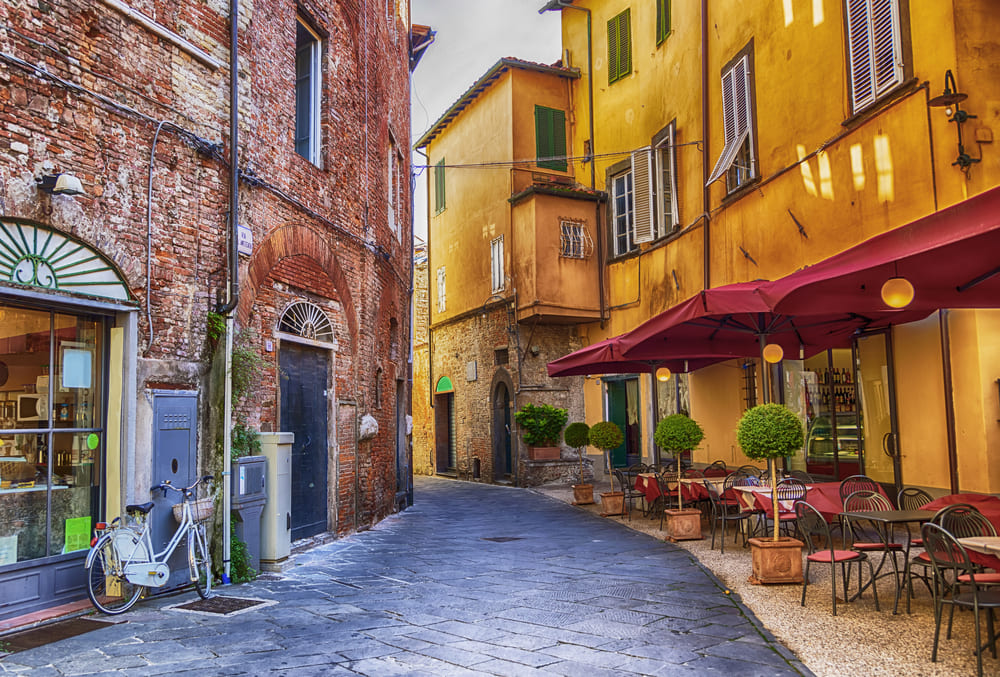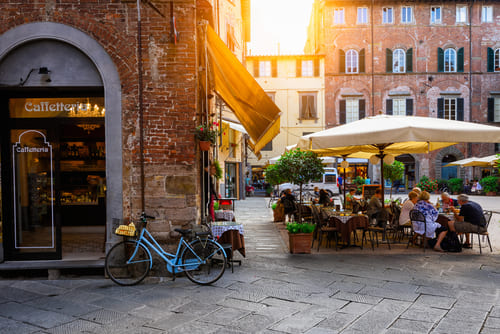Location Information
Lucca Tour: Day Tours From Lucca Italy
Lucca
The squares of Lucca are unexpected. You are walking along a street corner, between buildings and houses, and suddenly one appears. As if a curtain was raised on another century.
(Fabrizio Caramagna)
Lucca is an Italian town of 89 256 inhabitants in the north of Tuscany, capital of the province of the same name.
Lucca is considered as the medieval city par excellence. Protected by a mighty city wall, it is the city of Tuscany that most of all has kept its medieval layout intact: within the walls you will find churches, towers and cloisters and stone buildings with red terracotta roofs.
Officially of Roman origins, but on probable earlier settlements, Lucca, a city of merchants and weavers, maintained its autonomy as an independent state for several centuries until 1799 when the ancient Republic was supplanted, following the French conquest by Napoleonic troops, giving life to the Principality of Lucca and subsequently to the Bourbon Duchy of Lucca.
Known as the city of 100 churches, Lucca is famous for its historical monuments, it is one of the few capitals to preserve the historic center, rich in ancient structures from various eras, completely surrounded by a sixteenth-century wall that is overall intact and almost unchanged over the centuries. It is a notable city of art in Italy.
Lucca Attractions
Church of San Michele in Foro
On the remains of an ancient Roman forum stands another beautiful square in Lucca, that of San Michele, which is overlooked by noteworthy buildings such as the Church of San Michele in Foro, Palazzo Gigli and Palazzo Pretorio. Don’t miss a visit to the church which mixes Romanesque and Gothic elements. On the façade you will find an immense statue of St. Michael the Archangel which, according to legend, holds an emerald set in ancient times and which is visible only in particular light conditions.
Piazza dell’Anfiteatro
With its particular ellipse shape, Piazza dell’Anfiteatro is one of the most beautiful in Italy. Built starting in 1830 by the architect Nottolini, it takes up the ancient layout of the Roman amphitheater. The absence of large access roads makes it even more characteristic: in fact, there are four small doors that allow entry. Today the premises that overlook it make it the heart of Lucca.
Boschetto on the Tower
The best way to admire a small city is from the other. This also applies to Lucca, which in the Middle Ages was said to boast – 250 towers, of all shapes and sizes. Today only much less and only two can be visited: the Guinigi Tower and that of the Hours. The Guinigi Tower was commissioned by the Guinigi, a rich and powerful family of merchants from Lucca of the fifteenth century. It is 45 meters high and on the top has a small garden in which beautiful holm oaks have been growing for centuries. This particularity makes it unique, and also makes it the visual symbol of the city. The demanding climb has 230 steps. Even higher is the Torre delle Ore, which houses at the top a grandiose mechanical clock of the seventeenth century, still in working order.
Gallery






